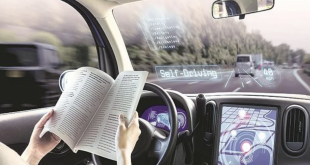The complexity of software in the automotive industry is changing rapidly. Today’s many vehicles are equipped with electronic control units, significantly controlled by software. The increasing number of software used in automotive has led to an increase in the demand for software engineers in the automotive industry, and experts believe it will continue to grow in the coming years.
Here’s how software engineering is changing the automotive industry.
How Embedded Software is Used in the Automotive Industry
The automotive industry is one of those sectors seeing significant development at this time, and embedded systems are the driving force behind the industry’s innovation. Embedded systems enable car manufacturers to produce safer, more efficient, and more reliable vehicles. Indeed, the automotive embedded system is an area where demand is rapidly increasing. But alongside these new opportunities are significant challenges for software engineers to overcome.
Autonomous driving is the future of the automotive industry, and embedded systems play a critical role in making it a reality. Embedded systems monitor and control the various cameras and sensors used for autonomous driving. Another way the automotive industry can benefit from embedded systems is through electric vehicles (EVs). They control and monitor various components of EVs, from charging systems to battery management systems.
The connected car is another area where embedded systems help drive innovation in automotive. Embedded systems allow vehicles to communicate with other vehicles, infrastructure, and the Internet.
As more and more car manufacturing companies are developing new software for vehicles through embedded systems, plenty of opportunities are waiting for software engineers in the automotive industry.
The Increase in Use of Electric Vehicles
As mentioned, one of the embedded software’s uses in the automotive industry is through electric vehicles, where they control and monitor the vehicle’s various components. Research suggests that electric vehicles will account for 16% of new car sales by 2025 and could rise to 50% by 2030. Such pivotal change has caused traditional car manufacturers to rethink not only the manufacturing aspect but also other significant aspects of their business, such as sales and aftersales.
The overwhelming majority of electric car users belong to three markets – the United States, Europe, and China, being the frontrunner. About 60% of the world’s electric car sales are from China. Nowadays, you will find half of the world’s EVs running on the roads of China. Europe and the United States are the other two large markets. Both have seen massive growth in the sales of EVs.
Despite seeing a concentration of EV sales in only the three big markets, some other regions are showing promising signs. The sales of Electric Vehicles more than tripled in Indonesia and India last year and more than doubled in Thailand.
The Use of Artificial Intelligence
Artificial Intelligence has a massive impact on various business sectors but is particularly powerful in the automotive industry. Experts predict that AI in the automotive industry can lead to an annual growth rate of almost 40%, reaching approximately $16 billion in 2027. With the continued increase in the demand for connected vehicles, companies in the automotive industry should consider looking to recruit automotive software engineers who can help implement the significant changes that AI can bring into the business.
The world is witnessing a continued increase in the use of connected vehicles and smart auto technologies, such as image and voice recognition, resulting in an industry that continuously relies on AI and automation in designing, producing, and using automobiles.
For some people, the use of AI in the automotive industry conjures images of self-driving or autonomous cars. While these vehicles are among the most visible AI applications, there’s more happening behind the scenes. AI and automation are essential in designing and producing automobiles and the thousands of components in each vehicle. Automation and smart robots are crucial in the vehicle’s manufacturing process. AI has also played a significant role in the production and sale of automobiles.
New Smart Vehicles
Smart vehicles are regular cars equipped with advanced car technology. These technologies have something to do with Artificial Intelligence (AI), Digitalization, the Internet of Things, Connectivity, and other trends in the automotive industry. Any vehicle connected to the cloud allowing the driver to manage some aspects of the vehicle through their smartphone is considered a smart vehicle.
Smart vehicles are equipped with what they regard as a system-driven form of AI or vehicles with high-tech technology. These vehicles have advanced components beyond the usual hybrid fuel and Bluetooth connection. Smart cars allow drivers to control some aspects of the vehicle from a mobile phone.
The idea of having a smart car or making your vehicle smart comes with the desire to operate your car control through airbag systems, anti-lock brakes, and keyless entry systems. It can also mean having a climate and entertainment system. For racers, it can mean controlling the car’s idle speed and automatic transmission.
New Autonomous Vehicles
Perhaps, the most popular integration of smart car technology is autonomous driving – a car that runs without human assistance. However, these fully autonomous vehicles are still in the development phase and are yet to be released to the general public. While there are already semi-autonomous cars, the technology is still in its infancy stage and has a long way to go before they become a reality.
Autonomous cars rely on actuators, sensors, complex algorithms, powerful processors, and machine learning systems to execute software. They create and maintain a map of their surroundings, relying on the sensors installed in the vehicle’s various components. Radar sensors are responsible for monitoring the position of nearby vehicles. Meanwhile, video lidar is a sensor that bounces pulses of lights off the car’s surroundings to determine the distances and road edges and identify street markings.
Autonomous cars have sophisticated software that processes the sensory input, plots a path, and gives instructions to the vehicle’s actuator, the component of the car that controls acceleration, steering, and braking. Technologies like obstacle avoidance algorithms, object recognition, and predictive modelling help the software adhere to traffic rules and avoid obstacles.
 Automotive Blog Automotive Blog brings you the latest news, car reviews and information on the automotive industry.
Automotive Blog Automotive Blog brings you the latest news, car reviews and information on the automotive industry.




